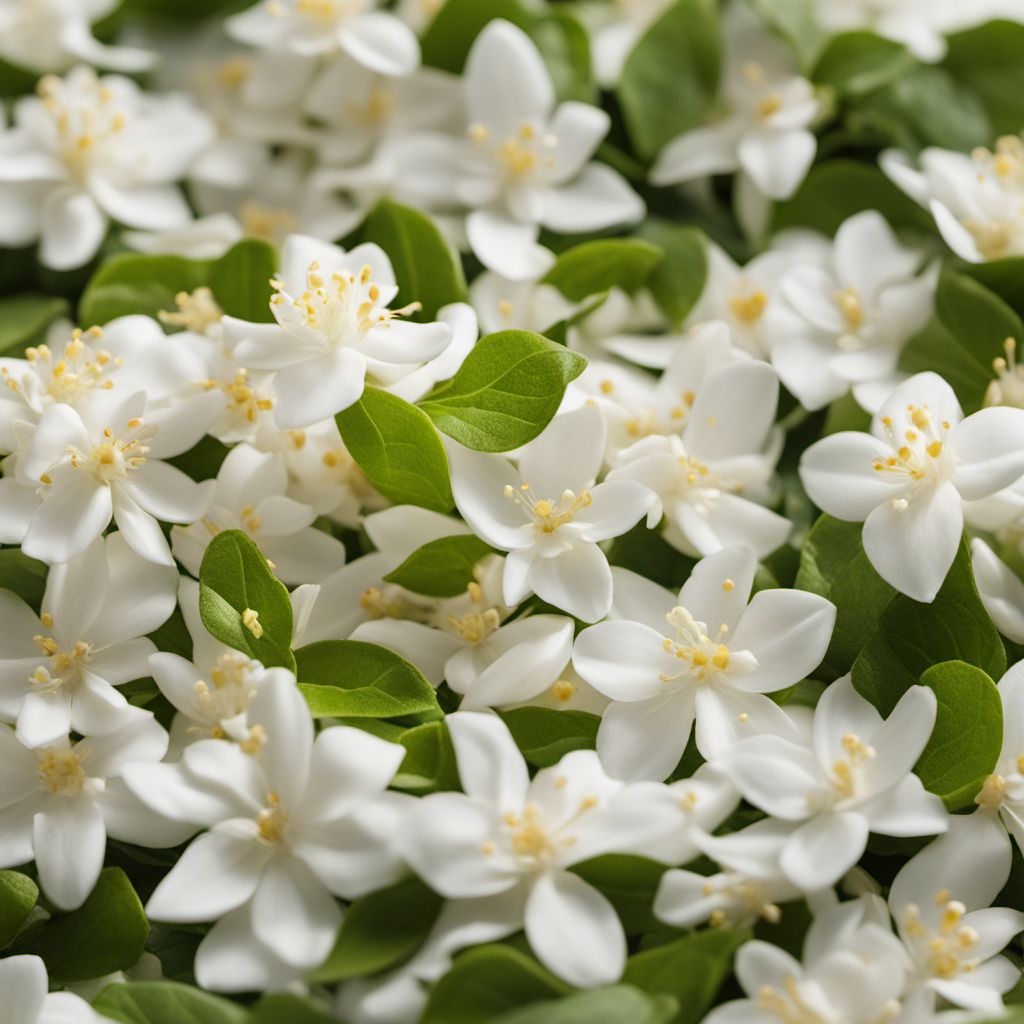
Ingredient
Jasmine infusion flowers and similar-
Aromatic Blossoms: Unveiling the Essence of Jasmine Infusion Flowers
Jasmine infusion flowers and similar ingredients are delicate, fragrant blossoms that possess a sweet and floral taste. They have a soft, velvety texture and are visually appealing with their vibrant colors and intricate petal formations. These blossoms are commonly used to enhance the flavor and visual appeal of teas, desserts, and savory dishes.
Origins and history
Jasmine infusion flowers have a rich history dating back centuries, originating in Southeast Asia and being widely cultivated in countries like China and India. These flowers hold cultural significance in various traditions, symbolizing purity, love, and spirituality. They have been used in traditional medicine and are an integral part of tea ceremonies in many cultures.
Nutritional information
Jasmine infusion flowers and similar ingredients are low in calories and fat, making them a guilt-free addition to culinary creations. They also contain antioxidants and certain compounds that may have potential health benefits.
Allergens
There are no known allergens associated with jasmine infusion flowers and similar ingredients.
How to select
When selecting jasmine infusion flowers and similar ingredients, look for blossoms that are fresh, vibrant, and free from blemishes or discoloration. Opt for flowers with tightly closed buds, as they indicate freshness. Avoid wilted or dried-out blossoms, as they may lack flavor and aroma.
Storage recommendations
To maintain the freshness and quality of jasmine infusion flowers, store them in an airtight container or resealable bag in a cool, dark place. Avoid exposure to direct sunlight or moisture, as it can cause the flowers to deteriorate. Proper storage can extend their shelf life for several months.
How to produce
Amateur gardeners can grow jasmine infusion flowers by planting them in well-drained soil and providing ample sunlight. These flowers thrive in warm climates and require regular watering. Alternatively, they can be purchased from specialty stores or online retailers.
Preparation tips
Jasmine infusion flowers and similar ingredients can be used to infuse flavor into teas, syrups, cocktails, and desserts. They can also be used as a garnish to add an elegant touch to dishes. To use them, steep the flowers in hot water or liquid to extract their aroma and flavor. They can also be dried and ground into a powder for use in baking or cooking.
Culinary uses
Jasmine infusion flowers and similar ingredients are commonly used in Asian cuisines, particularly in dishes from China, Thailand, and India. They are often incorporated into jasmine tea, rice dishes, desserts, and floral-infused beverages.
Availability
Jasmine infusion flowers and similar ingredients are commonly available in countries like China, India, Thailand, and other Southeast Asian regions. They can also be found in specialty stores or online retailers that cater to culinary enthusiasts.

